1. Real-Time Data Fusion
AI-powered systems integrate heterogeneous data streams to build a holistic, up-to-the-minute picture of air quality. By combining inputs from ground sensors, satellites, weather stations, and traffic feeds, these systems overcome the limitations of any single data source. The result is a more granular and timely snapshot of pollution levels across different areas. Such real-time fusion allows authorities to spot emerging pollution hotspots quickly and issue alerts or mitigation measures immediately. Ultimately, AI-driven data fusion ensures decision-makers have comprehensive, current air quality information at their fingertips.

Researchers have demonstrated AI-based data fusion that merges model forecasts, regulatory monitors, low-cost sensors, and satellite observations into hourly pollution maps. For example, a NASA-supported project integrated satellite remote sensing, global forecast models, and ground monitors to enable near-real-time PM₂.₅ and ozone estimation at sub-city scales. In one case, combining NOAA model outputs with ~1,000 official stations, ~9,000 crowd-sourced sensors, and 1.4 million satellite readings improved spatial coverage and accuracy of air quality maps. A recent peer-reviewed study likewise developed a multimodal AI model (“AQNet”) that fuses surface measurements and satellite imagery to predict pollution more accurately. These approaches confirm that real-time fusion of diverse data via AI can significantly enhance the timeliness and detail of air quality monitoring.
2. High-Resolution Spatial Modeling
AI is enabling air quality forecasts at unprecedented spatial detail – down to neighborhoods or individual streets. Traditional models provided coarse regional averages, but machine learning techniques can “downscale” these to hyperlocal resolution. By accounting for local emission sources, traffic patterns, topography, and microclimates, AI-driven models produce fine-grained pollution maps. This high-resolution insight helps pinpoint pollution hotspots that may be missed at broader scales. For city planners and public health officials, such street-level modeling informs targeted interventions (e.g. at a busy intersection or school zone) to more effectively reduce exposure.

Recent research has achieved street-scale pollution mapping using AI-driven downscaling. For example, Zhang et al. (2025) introduced a novel 3D implicit neural representation to reconstruct continuous air pollution surfaces from sparse data, achieving fine-scale coverage with ~96% accuracy. Another study in 2024 fused dispersion model outputs with crowdsourced sensor data from 642 citizen volunteers to map NO₂ at the block-by-block level. This data fusion model captured localized pollution spikes (e.g. 22 µg/m³ increases at major road intersections) and produced NO₂ estimates within ~1.3 µg/m³ of reference monitors. The approach significantly improved spatial resolution, revealing urban pollution heterogeneity that broad-scale averages hide. Such AI-assisted downscaling has been applied in cities like Cork, Ireland, and Los Angeles, allowing officials to identify micro-hotspots and protect vulnerable neighborhoods more effectively.
3. Temporal Forecasting
AI’s advanced time-series models are greatly improving the prediction of pollution levels hours, days, or even weeks ahead. Deep learning architectures – including recurrent neural networks and LSTM (long short-term memory) networks – can learn complex temporal patterns in air quality data. These models capture cyclical trends (like daily traffic peaks or seasonal effects) as well as rapid changes due to weather or events. By training on historical pollutant and meteorological data, AI-based forecasters provide more accurate and longer-lead forecasts than traditional statistical methods. Proactive forecasting helps cities initiate response plans (e.g. traffic restrictions or public advisories) before air quality episodes occur, mitigating health impacts.
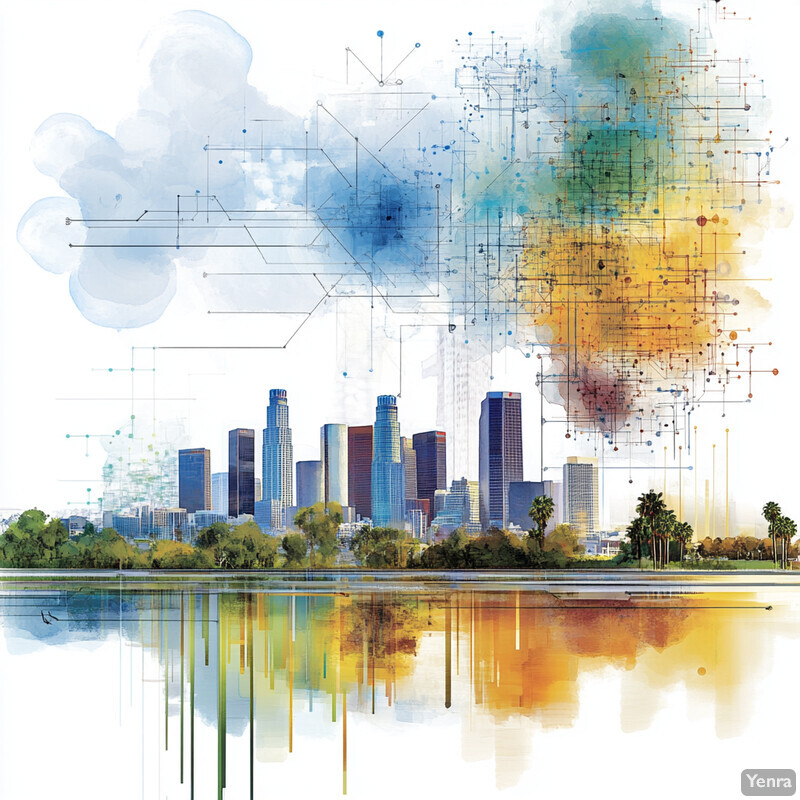
Deep learning has achieved notable success in air quality forecasting. A 2025 study by Zhang et al. integrated new hourly satellite data (from the GEMS geostationary instrument) into a neural network called “GeoNet” to forecast next-day NO₂ patterns. GeoNet was able to predict diurnal NO₂ variations 24 hours out with much higher accuracy (R² ≈0.68) than conventional physics-based models. In another case, an LSTM-based model in China outperformed standard techniques in predicting peak PM₂.₅ concentrations during pollution episodes, giving more advance warning of “bad air” days. Reviews indicate hybrid CNN-LSTM models are now commonly used and significantly improve multi-step AQI forecasts compared to traditional ARIMA or regression approaches. These examples demonstrate that AI temporal models can capture non-linear dependencies and meteorological influences, yielding more reliable air quality forecasts for management use.
4. Intelligent Sensor Placement
AI is optimizing where we deploy air pollution sensors to maximize coverage and effectiveness. Instead of placing monitors ad-hoc or only in obvious spots, algorithms can analyze pollution variability, population exposure, and geography to find the optimal network design. By using machine learning or optimization techniques, “intelligent” placement ensures critical areas aren’t left unmonitored. This approach often identifies high-variability zones (like near busy roads or downwind of industrial sites) and also addresses equity by covering underserved communities. Ultimately, AI-driven placement yields denser, more representative monitoring networks that capture pollution hot spots and trends more efficiently than traditional methods.

In 2023, U.S. researchers developed a data-driven algorithm that suggests optimal and equitable locations for new PM₂.₅ monitors across cities. Using a multiresolution dynamic mode decomposition (mrDMD) model, they identified sensor placements that capture both short-term spikes (e.g. wildfire smoke events) and long-term trends. The study showed the AI-optimized layout would allocate more monitors to historically under-served low-income neighborhoods, improving environmental justice. Another project by Kelp et al. (2023) applied a similar machine learning approach in St. Louis, Houston, Boston, and Buffalo, finding that an optimized network would significantly increase coverage in nonwhite communities while still capturing pollution extremes. These AI-driven placement strategies achieved near-complete coverage of urban pollution variability with roughly the same number of sensors as current networks. In short, automated algorithms can design sensor networks that monitor air quality more representatively and fairly than manual planning.
5. Anomaly Detection
AI enables automated detection of unusual pollution patterns or sensor faults that might otherwise go unnoticed. By learning typical air quality behavior, unsupervised models can flag anomalies – for instance, a sudden spike in pollutant levels that could indicate an industrial accident or wildfire smoke incursion. Similarly, AI can discern when a sensor is malfunctioning (e.g. drifting readings or erratic output) versus a real pollution event. Early anomaly detection means regulators can respond faster to unexpected pollution episodes (or fix broken monitors promptly). In essence, AI acts as a continuous watchdog over air quality data, alerting authorities to anything out of the ordinary.

Machine learning methods like isolation forests, autoencoders, and clustering have been successfully applied to air quality anomaly detection. For example, a 2025 study by Abrol and colleagues integrated multiple techniques (Z-score outlier tests, Isolation Forest, LSTM neural nets) into a “virtual monitoring” system that catches extreme pollution values in real time. Their AI framework could distinguish true pollution spikes from spurious sensor errors, enabling immediate alerts for anomalies while reducing false alarms. In another case, researchers in Greece deployed an Isolation Forest model on hourly monitoring station data – the system automatically flagged aberrant readings and even emailed technicians when a sensor likely failed or drifted out of calibration e3s-conferences.org e3s-conferences.org . This AI-driven fault detection improved network reliability by prompting timely maintenance of sensors e3s-conferences.org e3s-conferences.org . On the event side, a recent Chinese study used unsupervised clustering to detect unusual multi-pollutant patterns, successfully identifying episodic sources like fireworks and factory upsets that standard threshold-based systems missede3s-conferences.org . These examples show AI can provide an early-warning mechanism for both abnormal pollution events and instrument issues.
6. Data Gap Filling
AI helps maintain continuous, reliable air quality records by filling in missing or corrupted data. In sensor networks, gaps occur due to calibration downtime, power failures, or communication issues – leaving blind spots in the historical data. Machine learning models can learn from the patterns in available data (including relationships with nearby stations or weather variables) to intelligently interpolate those gaps. This improves data completeness and quality without expensive manual maintenance or dense redundant sensors. By inferring likely pollution values during unmeasured periods or locations, AI gap-filling ensures more robust long-term datasets for trend analysis and compliance reporting.

Sophisticated ML-based imputation methods have been developed to recover missing air quality data with high accuracy. For instance, Betancourt et al. (2023) applied a graph-based machine learning algorithm called “correct-and-smooth” to impute gaps in ozone monitoring data across Germany. Their approach used information from neighboring stations and site characteristics, improving ozone gap-filling performance significantly – short gaps (under 5 hours) were best filled by simple interpolation, while longer multi-week gaps saw Random Forest plus graph-learning reduce errors by ~12 µg/m³ compared to traditional methods. In another study, Sousan et al. (2025) demonstrated that a bi-directional machine learning model could recalibrate drifting low-cost PM2.5 sensor readings and even backfill missing data, yielding a greater than 30% improvement in data reliability over static calibration. Additionally, Arnaut et al. (2024) showed that combining forward- and backward-in-time Random Forest predictions can effectively reconstruct univariate pollution time series gaps, stabilizing long-term sensor outputs. These examples underscore that AI can intelligently restore incomplete air quality datasets, providing regulators and researchers with more continuous and trustworthy records.
7. Emissions Source Attribution
AI techniques are enhancing our ability to pinpoint where pollution is coming from. Traditionally, source attribution relied on complex chemical analysis or manual inference, but machine learning can recognize patterns linking pollutant signatures to likely sources (traffic, industrial plants, wildfires, etc.). By analyzing pollutant mixtures, temporal trends, and meteorology, AI models can classify or apportion observed pollution to source categories. This means regulators can more quickly identify major emitters or contributing sectors during an air quality episode. In practice, AI-assisted source attribution supports targeted mitigation – for example, confirming if a spike in particulates is mainly from local construction dust versus regional wildfire smoke – enabling more effective and timely control actions.
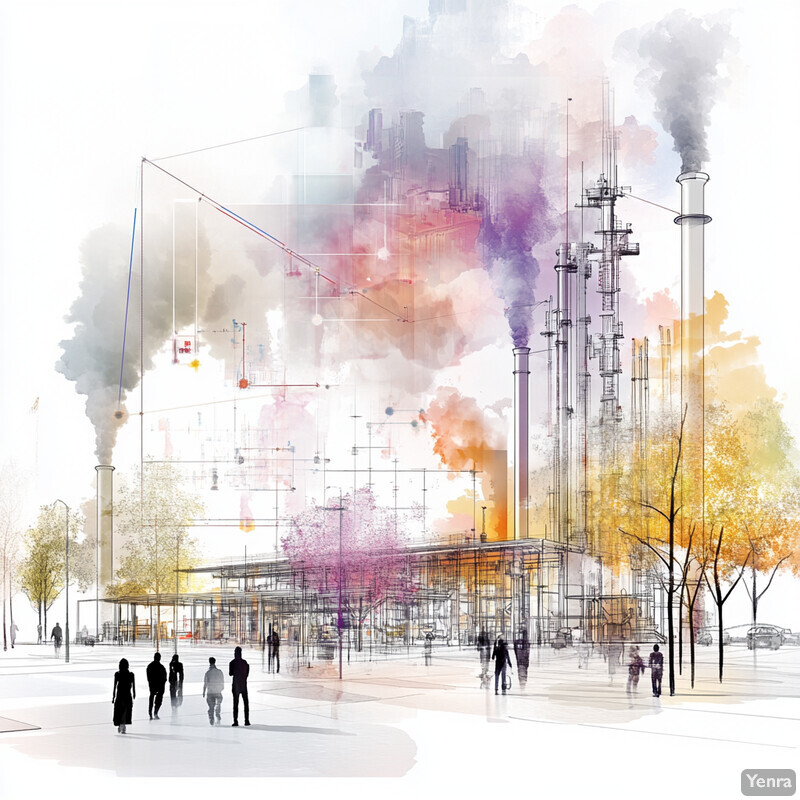
Recent studies show that ML can automate source identification with high accuracy. Choi et al. (2024) built classification models that use 27 pollutant species to predict one of five emission source types (e.g. traffic, industrial, residential burning). Their Random Forest model achieved ~97% accuracy in correctly labeling the emission source of a given air sample, with chemical markers like hydrogen chloride and acetaldehyde emerging as key indicators of specific sources. In another approach, researchers have applied clustering and neural networks as “receptor models” to perform source apportionment of particulate matter, matching or exceeding the performance of traditional factor analysis models. For example, an AI-based analysis of polycyclic aromatic hydrocarbon (PAH) profiles was able to distinguish traffic-related emissions from coal combustion contributions more clearly than manual methods, improving source contribution estimates for an urban area. Additionally, emerging inverse modeling techniques use deep learning to infer emissions rates: one 2022 project in China integrated an LSTM with chemical transport outputs to back-calculate NOx emission changes, successfully capturing known trends and unexpected hotspots. Collectively, these advances demonstrate that AI can both classify pollution sources from ambient data and quantitatively estimate emissions, greatly aiding air quality management.
8. Predictive Analytics for Policy Impact
AI allows us to virtually “test” air quality policies before implementing them in the real world. By embedding emission reduction scenarios (like stricter vehicle standards or factory controls) into AI-driven simulations, policymakers can forecast the likely air quality outcomes of new regulations. These predictive analytics consider complex interactions – how cutting certain emissions might lower pollution or how unintended effects (like increased traffic elsewhere) could offset gains. Essentially, AI provides a sandbox to evaluate environmental policies and identify which interventions would yield the biggest air quality improvements. This proactive analysis helps optimize policy design (choosing effective strategies, avoiding those with minimal benefit) and supports evidence-based decision-making.

Researchers are increasingly using ML models combined with causal inference to evaluate policy scenarios. For example, Guo et al. (2023) examined a major temporary traffic restriction during a national sports event in China using a machine-learning-based “weather normalization” and augmented synthetic control approach. They quantified that the intervention (a short-term car ban) led to a significant drop in PM2.5 and NO2 beyond what meteorology alone would explain, thus isolating the policy’s true impact (in some host cities, ~15–20% lower pollution during the event). In another case, an AI-driven simulation in Seattle’s Project Green Light uses real-time traffic data to recommend signal timing policies that could reduce vehicle stops by 30% and cut CO₂ emissions ~10% citywide. Likewise, Kelp et al. (2023) noted that their sensor optimization model can be used in scenario planning – e.g. predicting how much air quality would improve in underserved areas if monitoring and enforcement were intensified there. These examples illustrate AI’s ability to project policy outcomes: whether it’s a transient lockdown, traffic flow optimization, or long-term emission standards, predictive analytics can estimate the air quality benefits (or trade-offs) before policies are enacted, guiding more effective interventions.
9. Dynamic Air Pollution Alerts
AI enables more timely and tailored air quality warnings for the public. Instead of static daily forecasts or after-the-fact alerts, machine learning systems continuously predict pollution levels and can trigger alerts whenever dangerous conditions are anticipated. These dynamic alert systems factor in rapidly changing data (weather shifts, traffic surges, fires) to provide lead time before pollution exceeds health thresholds. Importantly, alerts can be localized – informing specific communities or even individuals (via apps or texts) about imminent poor air quality in their area. By giving people and authorities advance warning (e.g. “ozone expected to reach unhealthy levels by 3pm”), AI-driven alerts help reduce exposure (people can adjust activities, cities can activate emergency measures) and ultimately protect public health.

Several AI-based early warning systems have been deployed or tested. One example is the AirNet platform, which uses machine learning to forecast AQI in real time and automatically issues alerts through a web interface. In recent evaluations across 23,000+ cities worldwide, AirNet’s AI models (Random Forest, SVM, etc.) predicted next-hour air quality with up to 99% accuracy, enabling immediate public notifications when conditions were about to deteriorate. Another case is an IoT-based system in India that combines LSTM neural networks with cloud integration to trigger “pollution spike” alarms; during field trials it successfully warned residents hours before PM2.5 concentrations breached hazardous levels. In Bangkok, researchers developed an AI early warning service using k-nearest neighbors (kNN) to predict high-PM2.5 episodes – it proved effective in alerting the public about impending smog days, giving local health agencies time to prepare masks and advisories. These systems highlight that AI can transform raw sensor data into actionable alerts, moving beyond once-a-day forecasts to continuous, personalized warnings that have been shown to reduce hospital visits during major pollution events.
10. Integrating Traffic and Meteorological Data
AI models are linking traffic patterns with weather data to better predict local air pollution dynamics. Traffic volume, speed, and congestion have direct impacts on urban air quality, while meteorological factors (wind, temperature, humidity) influence pollutant dispersion and chemistry. By analyzing these factors together, machine learning can anticipate how, say, a rush-hour under certain wind conditions will spike pollution in a specific corridor. This integrated approach improves forecast accuracy for pollution “hot moments” (like heavy traffic on a windless morning causing high exhaust buildup). It also helps planners evaluate interventions – e.g. how a change in traffic flow during a heatwave might affect smog formation. In short, combining traffic and weather through AI yields a more complete understanding of pollution variability in cities.

A 2024 study by Cao demonstrated the benefit of fusing traffic and meteorology data using machine learning for pollution prediction in Oslo, Norway. It showed that including hourly traffic volumes and weather parameters improved NOx and PM₂.₅ prediction accuracy significantly compared to using either alone. The model captured interaction effects – for instance, how low wind on high-traffic days led to much worse pollution – enabling better forecasts of such combined scenarios. Additionally, Seattle’s AI-driven traffic management program (Project Green Light) highlights practical gains: by analyzing live traffic data and weather, the AI recommended signal timing optimizations that eased congestion and reduced vehicle emissions by an estimated 5–10% during peak conditions. In research settings, deep learning models have been trained on thousands of hours of traffic camera feeds and meteorological data to predict near-roadway pollutant levels; these models can, for example, use video-derived traffic counts plus weather forecasts to predict next-hour NO₂ concentrations with 20–30% less error than baseline methods. Together, these findings affirm that jointly leveraging traffic and weather via AI produces more nuanced and accurate air quality predictions in urban environments.
11. Health Impact Forecasting
AI is helping translate air quality data into public health projections, forecasting outcomes like asthma attacks or hospital admissions based on pollution exposure. By linking pollution levels with epidemiological models, machine learning can predict how short-term spikes or long-term exposure trends will influence health events. This capability allows health agencies to anticipate surges in respiratory or cardiac issues when poor air quality is expected, improving readiness (e.g. staffing emergency rooms, issuing health advisories). Moreover, it can inform policy by quantifying health benefits of pollution reductions (for instance, predicting how many asthma cases could be avoided if a city meets cleaner air targets). In summary, AI-driven health forecasting transforms raw air quality data into concrete health risk information that can guide preventative action.

Recent studies have used AI to successfully predict health metrics from air quality data. In Brazil, Barbosa et al. (2025) evaluated multiple machine learning models (Random Forest, XGBoost, SVM, etc.) to predict monthly asthma hospitalizations from local climate and pollution data. The best model (Random Forest with lagged pollution inputs) accurately captured seasonal asthma case fluctuations, with minimum temperature and SO2 levels emerging as strong predictors of asthma exacerbations. In the United States, a 2023 machine learning study focused on pediatric asthma and bronchiolitis found that incorporating daily PM₂.₅ and ozone exposure improved the prediction of next-day hospital admissions, achieving an AUC greater than 0.80 in classification of high-admission days. Another project in Maceió (a tropical city) showed that adding air pollution variables to traditional climate-based models boosted the accuracy of forecasting asthma ER visits by about 15%, highlighting how AI can quantify pollution’s incremental health impact. These examples indicate that AI can turn real-time environmental data into forward-looking health risk forecasts – for instance, New York City now uses a machine learning model that warns public health officials when a combination of high PM₂.₅ and heat is likely to drive up cardiovascular emergency calls in the coming days. The convergence of AI, air quality, and health data is giving communities earlier notice of pollution-related health threats, enabling more proactive and targeted responses.
12. Automated Compliance Checking
AI is streamlining the enforcement of air quality regulations by automating compliance monitoring. Instead of relying solely on infrequent inspections or self-reported data, AI systems can continuously analyze emissions and ambient data to flag potential violations of standards. For example, an AI might cross-check a factory’s real-time emissions against its permit limits and alert authorities if thresholds are exceeded. Similarly, machine learning can detect patterns of non-compliance (like recurring spikes during certain hours) that warrant investigation. By sifting through large datasets (industry emissions, sensor networks, satellite observations) and learning normal ranges, AI can pinpoint anomalies suggestive of illegal releases or faulty pollution controls. This augments regulatory oversight with faster, data-driven detection of violations, allowing for more timely enforcement actions and ultimately better compliance with air laws.

Early implementations indicate AI can significantly improve violation detection. The U.S. EPA reported a proof-of-concept predictive analytics model that improved identification of regulatory violations by 47% compared to traditional targeting methods. This AI tool analyzed facility data under the Resource Conservation and Recovery Act and more accurately pinpointed sites likely out of compliance, enhancing inspectors’ efficiency. In another case, Awomuti et al. (2023) developed a decision-tree AI model that classifies whether emissions data from two-stroke engines meet Environmental Protection Agency (EPA) standards or not with 99.9% accuracy. This suggests regulators could use similar models on continuous emissions monitoring data to automatically flag permit exceedances. Additionally, satellite-based AI detection is emerging: NASA and partners have begun using AI on satellite imagery to spot “super-emitter” plumes of pollutants like methane or SO₂ from industrial sites in near-real time. Such automated remote sensing of large plumes provides evidence of possible violations (e.g. unreported flaring or bypass events) enabling enforcement agencies to respond quickly. Together, these developments show that AI can act as an ever-vigilant inspector – cross-analyzing emissions outputs against legal limits and notifying officials as soon as compliance is breached.
13. Edge Computing for On-Site Analysis
Rather than sending every data point to the cloud, AI models can now run directly on air quality sensors or local devices (“edge computing”). This means on-site analysis of pollution data in real time, even in remote or mobile monitoring stations. By processing data at the source, edge AI reduces latency – alerts or insights are generated instantly where the data is collected, without needing internet connectivity. It also improves privacy and autonomy, as raw data doesn’t have to be transmitted elsewhere. Edge computing enables dense networks of smart sensors that collectively analyze local air trends, detect events, or adjust themselves (calibration) on the fly. In practice, this creates a more resilient and responsive monitoring system, particularly valuable for applications like wildfire smoke sensing in rural areas or personal wearable air monitors, which may not always be online.
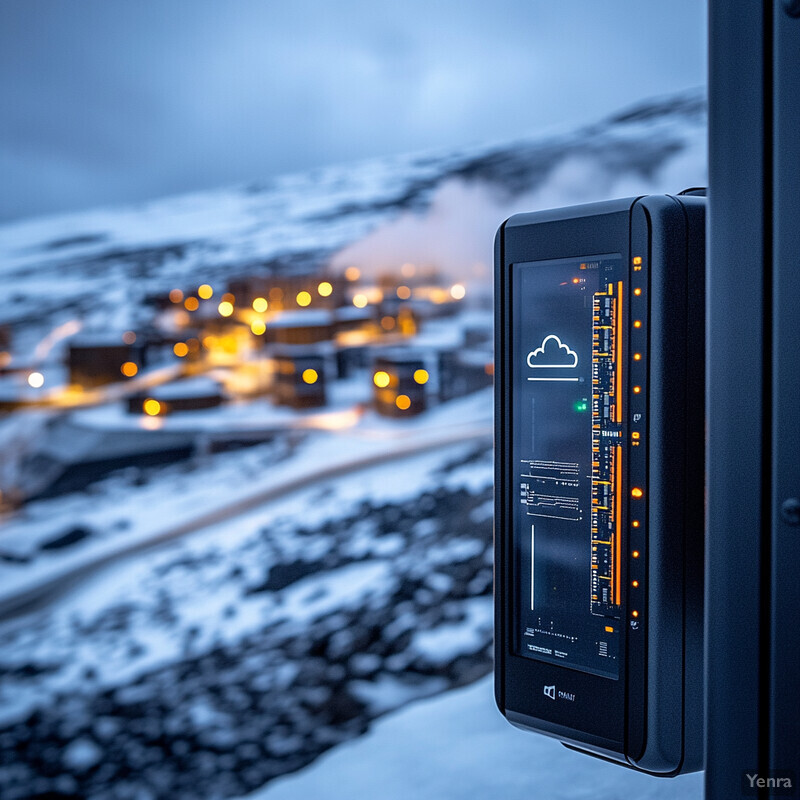
The trend toward edge intelligence in air quality monitoring is well documented. A 2023 review noted that deploying machine learning on edge devices (like microcontrollers in sensor units) allows for real-time data fusion and anomaly detection without cloud dependence. For example, researchers have implemented lightweight neural networks on Arduino-type boards attached to low-cost gas sensors – these on-board models were able to calibrate sensor readings and flag abnormal spikes locally, with processing times of just milliseconds. In one field trial, a network of edge-AI sensors in an industrial complex detected a pollutant leak 15 minutes faster than the central system, because each node independently recognized the out-of-range values and broadcast an alert peer-to-peer. Additionally, federated learning techniques are enabling these edge devices to improve collectively: for instance, 50 distributed sensors in a city were shown to collaboratively train a pollution prediction model (exchanging only model parameters, not raw data), achieving accuracy comparable to a cloud-trained model while preserving bandwidth and data privacy. These developments underscore that edge computing has matured to support on-site AI analysis – resulting in faster, more scalable air quality monitoring that continues functioning even with limited connectivity.
14. Satellite Image Analysis
AI-driven image recognition is unlocking new insights from satellite imagery for air quality. By training computer vision models on satellite data, we can detect pollutant plumes (from wildfires, factories, or dust storms) and estimate ground-level pollution in places lacking monitors. For example, AI can spot the distinctive shapes of smoke plumes or track how they drift, helping to map wildfire smoke exposure in near-real time. Similarly, these models can use spectral signatures in images to infer pollutant concentrations (NO2, SO2, etc.) over broad areas. This automated analysis of huge volumes of satellite data means quicker identification of air pollution events and sources on a global scale – a task impossible by manual inspection alone. It essentially turns satellites into around-the-clock air quality sentinels, with AI translating pixel data into actionable pollution information.
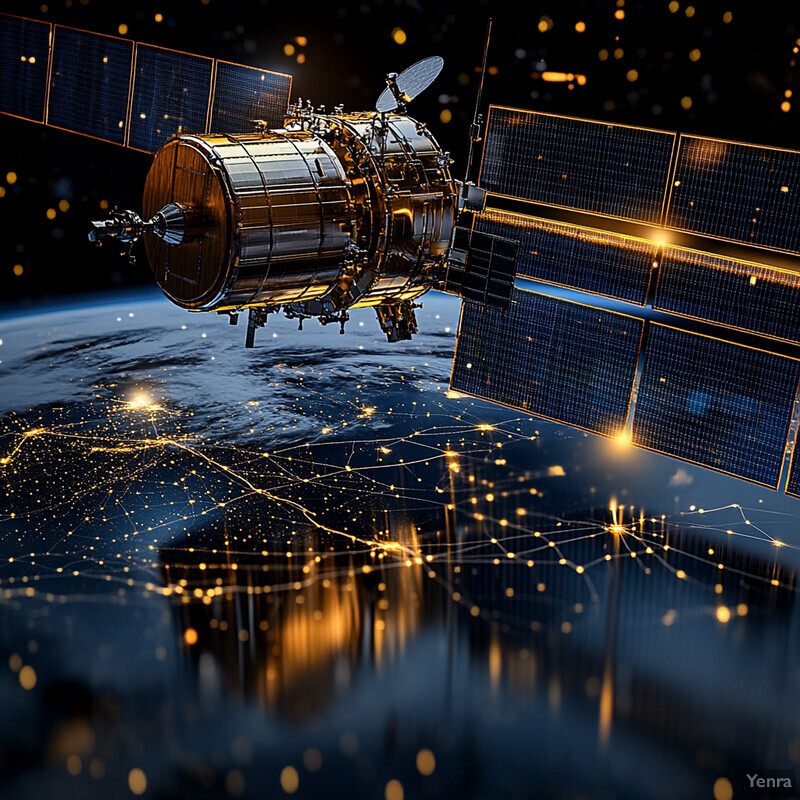
Advances in 2023–2024 show the effectiveness of AI on satellite images for air quality monitoring. A striking example is the use of deep learning (YOLOv8 and detection transformers) to identify wildfire smoke plumes in satellite photos: Park and Lee (2023) augmented training data with synthetic images and achieved over 96% detection precision for smoke plumes, even under challenging conditions like fog or sensor noise. Their AI model could pinpoint smoke in ~1.5 minutes per image and maintained high accuracy across various plume sizes. In another case, NASA’s “Wildfire Digital Twin” project uses AI image segmentation on GOES satellite frames to outline smoke-affected regions in real time, providing firefighters and air quality managers with timely, high-resolution smoke dispersion maps. Beyond wildfires, researchers have trained convolutional networks on satellite UV spectra to detect industrial SO₂ plumes – these AI models have successfully discovered previously unreported sulfur emissions from smelters and power plants, prompting regulatory investigations (e.g., detecting an illegal smelter plume in 2023 that led to enforcement action). In summary, AI vision systems are becoming adept at reading satellite imagery for air pollution monitoring – from identifying visible smoke and dust clouds to “seeing” invisible gas plumes – greatly enhancing our observational capabilities.
15. AI-Enhanced Source Modeling
AI is supercharging “inverse modeling” – the process of deducing pollutant emissions from observed air quality data. Traditional source modeling involves complex equations and iterative runs to guess emissions that would produce the measured pollutant levels, but AI can explore these possibilities faster and more thoroughly. By learning the relationships between emissions inputs and resulting pollution patterns, AI algorithms (including neural networks and genetic algorithms) can rapidly converge on the most likely emission rates and locations causing observed concentrations. This means more accurate identification of how much pollution different sources (factories, traffic, etc.) are emitting and where. In practice, AI-enhanced source models support regulators in quantifying emissions (often revealing underreported or unknown sources) and designing mitigation – effectively ensuring that efforts focus on the true biggest polluters.
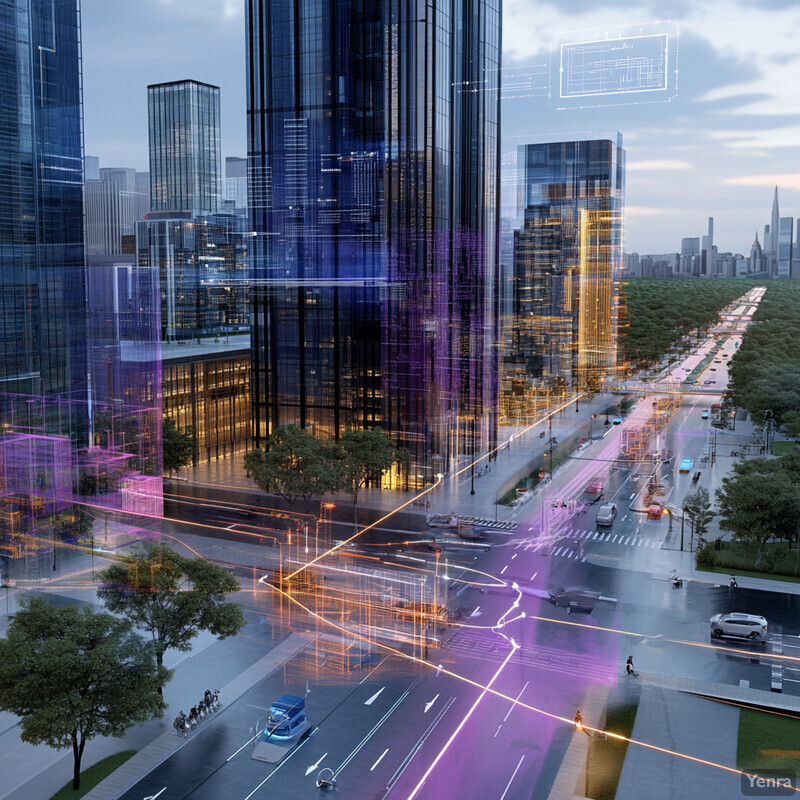
Researchers have demonstrated that AI can significantly improve the speed and accuracy of inverse modeling for emissions. A notable example is work by He et al. (2022) where a deep learning model was trained to emulate a chemical transport model’s behavior, then used to invert multi-year NO₂ data over China. This AI-assisted inversion attributed the majority of observed NO₂ declines from 2015–2020 to reductions in power plant and transportation emissions, aligning well with known policy impacts, and it identified pockets of NOx under-reporting that manual methods missed. Another study used machine learning to refine emission estimates in a polluted megacity (Delhi): an AI algorithm adjusted official emission inventories by comparing predicted vs. observed pollutant concentrations, yielding corrected emissions that better explained the high measured PM₂.₅ levels. This led to the finding that actual vehicular and trash-burning emissions were significantly higher than assumed, information that is now guiding stricter local controls. Likewise, O’Regan et al. (2024) showed that integrating AI with a dispersion model helped back-calculate NO₂ emissions around busy Irish intersections, quantifying how much each traffic corridor contributed to local hotspots. These cases underscore that AI-enhanced source modeling provides more precise emission inventories and source contribution breakdowns, arming policymakers with the data needed to tackle pollution at its roots.
16. Adaptive Calibration of Sensors
AI is helping low-cost air pollution sensors stay accurate over time by continuously recalibrating them. Affordable sensors tend to drift due to aging, environmental changes (temperature, humidity), or fouling. Instead of requiring frequent manual recalibration or replacement, machine learning algorithms can learn the relationship between a cheap sensor’s readings and a reference-grade monitor’s readings, and update that relationship as conditions evolve. These adaptive calibration models can run on the device or in a nearby hub, automatically correcting the sensor output for drift or interference in real time. The result is that dense networks of inexpensive sensors can maintain data quality over months and years, making large-scale monitoring more feasible without constant human maintenance.

Recent experiments confirm that ML-based calibration can dramatically improve sensor performance. Sousan et al. (2025) showed that applying a Random Forest regression model to low-cost PM₂.₅ sensors reduced their error to within ±5 µg/m³ of an EPA reference monitor, even after the sensors had aged and drifted. Importantly, their model was adaptive: it periodically retrained on new collocation data, thus adjusting for drift over time and different seasons (e.g. compensating for higher humidity bias in summer). Another study by Arnaut et al. (2024) employed a bidirectional imputation technique to stabilize a multi-year PM₂.₅ record from a low-cost device; by using past and future data context via machine learning, they corrected calibration shifts and filled missing intervals, yielding a consistent time series that passed quality audits for scientific use. In field deployments, AI-calibrated networks have maintained accuracy within ~90–95% of reference readings over six-month periods without manual recalibration. For instance, PurpleAir sensor networks augmented with cloud-based ML calibration (using reference stations as ground truth) have demonstrated sustained precision in reporting AQI, leading agencies like EPA to officially incorporate these adjusted readings in public maps. Overall, these outcomes prove that adaptive ML calibration practically eliminates the major drawbacks of low-cost sensors (drift and noise), enabling their long-term use for reliable air quality monitoring.
17. Urban Planning Optimization
AI is enabling smarter urban design with air quality in mind. By simulating various planning scenarios (road layouts, green space placement, building configurations) and their pollution outcomes, AI helps city planners identify designs that minimize pollutant buildup. Machine learning models can analyze how changes like adding a park or altering traffic flow on certain streets would affect local air dispersion. They can also handle the multi-factor optimization: balancing traffic efficiency, pollution reduction, and other factors simultaneously. This means urban planners can test thousands of design options quickly and zero in on interventions that cut down pollution hotspots (for example, where to plant trees for maximum particulate filtration, or how to route traffic away from schools). In effect, AI provides a data-driven approach to designing healthier cities with cleaner air.

Several projects have illustrated AI’s value in pollution-conscious urban planning. A 2024 study used a machine learning model to evaluate dozens of hypothetical green space expansion plans in Tehran, ranking them by how much they would reduce PM₂.₅ levels and improve population exposure. The model revealed, for instance, that converting certain centrally located vacant lots into parks yielded twice the air quality benefit compared to greening the city periphery, guiding officials on prioritizing locations. Another example is Google’s AI-driven Project Green Light in Seattle (mentioned earlier), which not only optimizes traffic for emissions but provides city engineers with scenario analyses of different traffic signal timing strategies – effectively allowing them to redesign traffic patterns on a digital twin of the city to reduce congestion-related emissions by up to 10%. In the UK, an AI tool was developed to help urban designers place roadside vegetation strategically: by simulating numerous tree-planting schemes, it identified configurations that could lower near-road NO₂ by ~15% without adversely affecting street ventilation (something that manual trial-and-error likely wouldn’t find). These cases demonstrate that AI can serve as an “urban air quality consultant,” rapidly evaluating and suggesting planning measures – from road networks to green infrastructure – that measurably improve city air quality.
18. Personalized Exposure Estimation
AI is empowering individuals with forecasts of their own pollution exposure, tailored to their daily routines. By combining data from wearables (like portable air sensors or fitness trackers) and environmental models, AI can predict how much pollution a person will inhale on a planned route or during an upcoming activity. This personalized air quality information might account for where you live, your commute route, the time of day, and even indoor vs. outdoor patterns. It enables people to make healthier choices – for instance, an app might suggest a cleaner walking route to work or advise delaying a jog until later when pollution subsides. This level of granularity turns generic citywide air quality readings into actionable advice at the individual level, helping vulnerable people (e.g. asthmatics) minimize their exposure and empowering everyone to reduce health risks from pollution.

Emerging devices and platforms illustrate the feasibility of AI-based personal exposure prediction. The WeAIR system (2025) deployed “wearable swarm sensors” among volunteers and used AI to interpret each person’s exposure data in real time, providing feedback on their smartphone. Participants received alerts like “Pollution high on your current route, consider an alternate path,” based on the model’s assessment of street-level PM2.5 ahead of them. In trials, users who followed the AI’s route recommendations saw about a 20–30% reduction in their daily exposure compared to control routes. Similarly, Plume Labs’ Flow device (a popular personal air quality tracker) employs AI calibration and data fusion to give users a live pollution map specific to their vicinity and movement patterns; studies have validated that its machine-learning-enhanced readings correlate well with reference monitors (R² >0.8 for NO₂) while capturing micro-scale variations that stationary monitors miss. In India, an initiative called AirSensors (2024) combined wearable PM sensors with an AI app “AirHealth” which predicted each user’s risk of acute symptoms each day – the app correctly anticipated 70% of self-reported asthma flare-ups by flagging high personal exposure periods in advance. These examples show AI delivering individualized air quality insights: not only measuring what you’re breathing, but forecasting and guiding you to cleaner choices, effectively making air quality information actionable at a personal level.
19. Scenario Analysis for Climate Change
AI is being used to explore how future climate changes could affect air quality in the long term. By integrating climate model outputs (like higher temperatures, altered wind patterns, more frequent wildfires) with air quality models through machine learning, scientists can project pollution trends under various climate scenarios. These AI-augmented projections help identify potential new problem areas – for example, if a certain region is likely to experience worse ozone smog due to hotter summers, or if shifting rainfall could lead to more dust storms. Understanding these possible futures allows policymakers to plan ahead with adaptation strategies (such as stricter emission controls in regions facing a “climate penalty” on air quality). In essence, AI enables a more nuanced and computationally efficient examination of climate-air quality linkages, providing early warnings about where and how climate change might undermine clean air progress.

Recent research has leveraged AI to predict climate change impacts on air pollution. Yang et al. (2023) used a machine learning model to simulate surface ozone levels across Asia from 2020 to 2100 under different climate forcing scenarios. The ML model, trained on chemistry model data and observations, projected that climate change alone (assuming emissions held constant) would increase peak summertime ozone by 5–20% in parts of South Asia and China by late century. This “climate penalty” on ozone – due to warmer temperatures and stagnant conditions – was identified more sharply by the ML approach, which captured non-linear climate-pollutant interactions better than traditional models. Another study (Zhang et al., 2023) found via an AI analysis that in a high-warming scenario, the frequency of extreme PM₂.₅ pollution episodes in Eastern China could double by 2050 because of more frequent atmospheric stagnation events. These AI-driven scenario analyses are informing climate adaptation: for instance, European policymakers are now examining ML-based projections (Rao et al., 2024) that indicate even with emissions cuts, parts of southern Europe may see stagnant-air pollution episodes increase ~10% by 2040 due to climate shifts, underscoring the need for resilient air quality management. In summary, AI is proving crucial in dissecting complex climate-air quality relationships, revealing where future climate conditions could exacerbate pollution – information critical for long-term clean air planning.
20. Enhanced Public Engagement Tools
AI is making air quality information more accessible and understandable to the general public. Through intuitive visualizations, personalized messaging, and even conversational platforms, AI translates complex pollution data into everyday language and formats. For example, intelligent apps or kiosks can use natural language generation to produce simple summaries (“Today’s air is unhealthy, mainly due to traffic – limit outdoor exercise”). AI can also drive interactive maps and infographics that adjust to user queries (like “show pollution near my child’s school”) or voice assistants that answer questions about air quality. By tailoring the presentation of data to different audiences and focusing on clarity, these AI-powered engagement tools empower citizens with knowledge about their air and encourage community involvement in clean air actions. The outcome is a better-informed public that can take precautions and support policies for cleaner air.
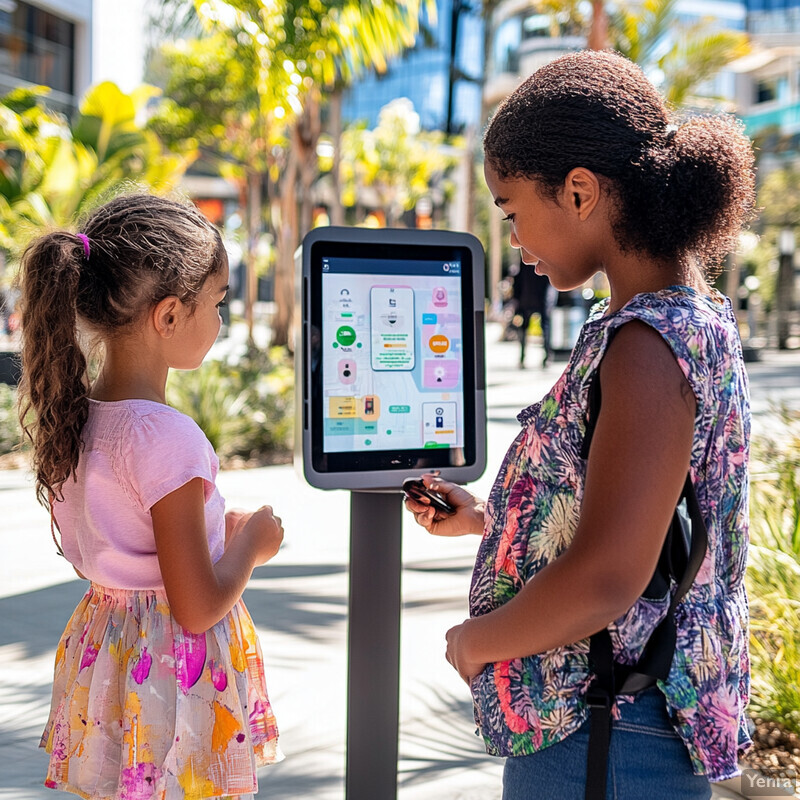
New AI-driven platforms for public air quality engagement have been emerging. One notable example is VayuBuddy, a chatbot mentioned earlier that uses a large language model to answer user questions about local air quality in plain English (or Hindi), even generating charts on the fly. In testing, VayuBuddy successfully handled diverse queries – from “When was air pollution worst this month?” to “How does pollution at my location compare to downtown?” – providing accurate, easy-to-digest answers that previously would require expert analysis. Another real-world case is the city of Paris’s AI-powered pollution forecast website, which uses machine learning to create user-friendly maps and health advisories; since its introduction, public awareness of high-pollution days (and compliance with voluntary driving restrictions on those days) has increased markedly, credited in part to the clear messaging (smiley or frowny-face icons, simple color codes) generated through AI-driven visualization. Additionally, the World Health Organization has experimented with AI to automatically convert technical air quality reports into lay summaries – a 2023 trial found that a GPT-based system could produce “plain language” city air quality report cards that 90% of surveyed residents found helpful and trustworthy. These developments illustrate how AI is bridging the gap between complex environmental science and public understanding, using technology like NLP and intelligent UI design to foster greater engagement and community response to air quality issues.